Stories from Israel and Palestine
The sun was still hours away from rising when Andrew and I brushed our teeth, tied our hiking shoes and made our way down to the lobby of our hotel in Arad. By 4:30 a.m., most of our fifty-person group had already been up for hours or hadn’t slept at all, still jet-lagged from the flight the day before. We filed onto the bus yawning and saying good morning to the tour mates we had only met sixteen hours ago when we landed in Tel Aviv.
It was our first morning in Israel, and we were going to climb Masada.
Rugged and remote, the Judean fortress of Masada sits on top of a lonely cliff in the east of the Negev desert, overlooking the Dead Sea and beyond to the mountains of Moab.
Our bus driver, Shimshon Solomon, drove us through the switchbacks in the dark. We hadn’t eaten breakfast or even had a coffee yet because we were in a bit of a hurry. Our goal was to watch the sunrise over the Moab mountains. But as the morning became lighter, we realized that the fog would be too heavy for us to have a good view. In the end, that didn’t matter. The most impressive part about our trip to Masada wasn’t the view, but the cliff and the climb.

5:07 a.m.

Masada looms before us.
As I mentioned in a previous blog post, our tour group spanned ages 23 to 83. There were four people who used canes to walk and many others who were apprehensive about the uneven, steep or slippery rocks that we often climbed during our trip.
No other climb, though, was harder than that first morning at Masada. Waking up that morning, we didn’t know that the cliff was 1300 ft high. That it was so difficult to navigate that even the Roman soldiers had to build an enormous ramp to reach the top. We didn’t know that the trail would be cluttered with tumbled rocks and loose sand. That there were few guard rails to provide support.
The sun was just starting to rise and the climb would take at least thirty minutes, maybe more. I remember the faces of some of my tour mates looking a bit crestfallen or incredulous.
Can I really do this?
It was the first day. We didn’t know each other yet. Didn’t know if we would help each other if we stumbled. If we got hurt, we would be out of commission for the rest of the trip. There was a feeling that climbing Masada would set the tone for how we approached the rest of our time in Israel, both individually and as a group.
Everyone climbed. Canes and all. Some made it up in twenty minutes, others in an hour and twenty minutes. Some supported the elbows of fellow climbers on the way up, and others extended hands on the way down. While not explicitly religious, climbing Masada was deeply Christian and one of the most meaningful experiences of our trip. That climb encapsulated a spirit of barefaced faith, of resoluteness. A spirit of fellowship. A decision to embrace what God puts before you, together.
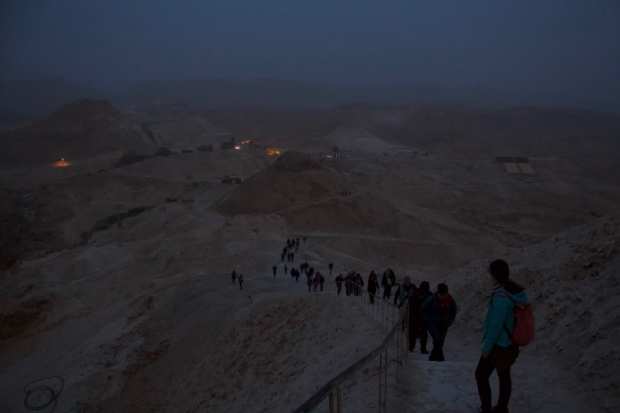
A long journey in the dark. Photo by Jordan Duerrstein.

Pilgrims. Photo by Jordan Duerrstein.
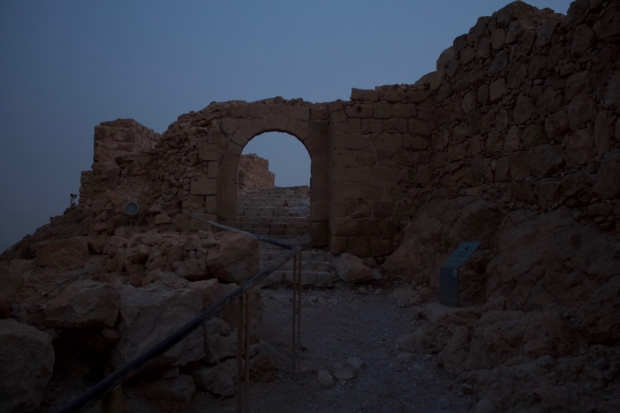
Entry gate at the top of the trail. Photo by Jordan Duerrstein.
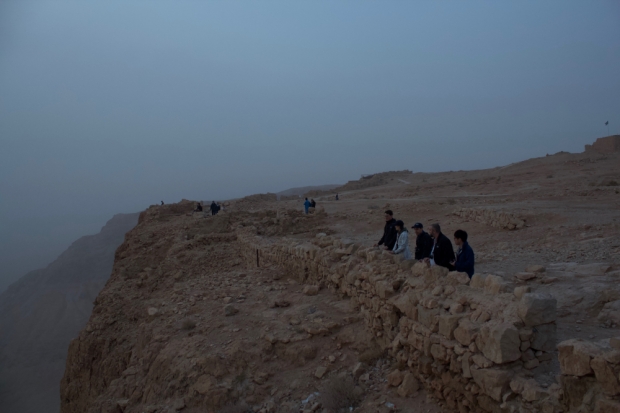
Overlooking the Dead Sea (but mostly just the fog). Photo by Jordan Duerrstein.
A palace in the wilderness
Masada, now a UNESCO World Heritage site, is one of the many magnificent complexes built by King Herod, aptly called the Great Builder. It is so remote, in fact, that it remained untouched for more than thirteen centuries until it was rediscovered in 1828. The stark, wild landscape of the surrounding region has also remained unchanged for thousands of years. To go to Masada is to go back in time and find yourself in that same wandering wilderness we read so much about in the stories of Abraham and Moses.

Masada in daylight. Roman ramp can be seen on the right.

Plains around Masada on the drive back to Arad. (This is rainy season)
Masada is important for a number of reasons. Archaeologically, it’s a remarkable example of engineering, particularly the sophisticated water system that turned an arid desert into a lavish oasis fit for a King. It also has historical and emblematic significance for Israel. Masada was the last refuge of the Sicarii rebels in the Great Jewish Revolt against the Roman Empire in 73 A.D. When the Roman soldiers finally broke through their defences by building a ramp up the side of the mountain, all 960 Jewish rebels and their families camped at Masada committed mass suicide, choosing death rather than slavery.
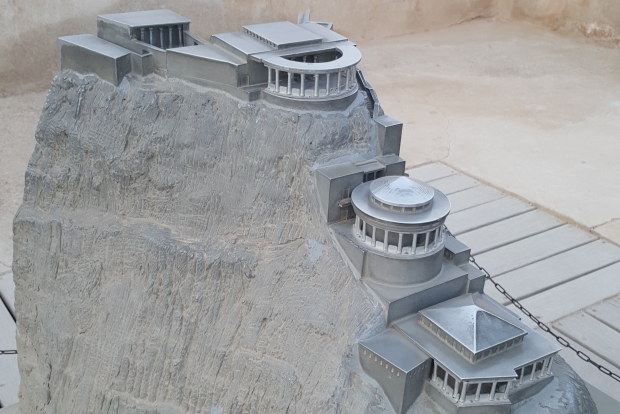
Model of Masada.
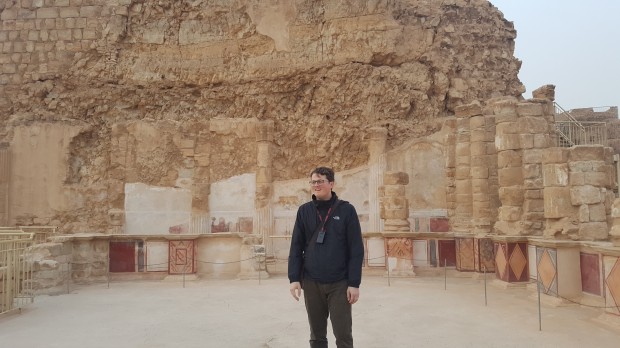
Andrew stands in Herod’s private quarters. These are the bottom rooms on the model above.
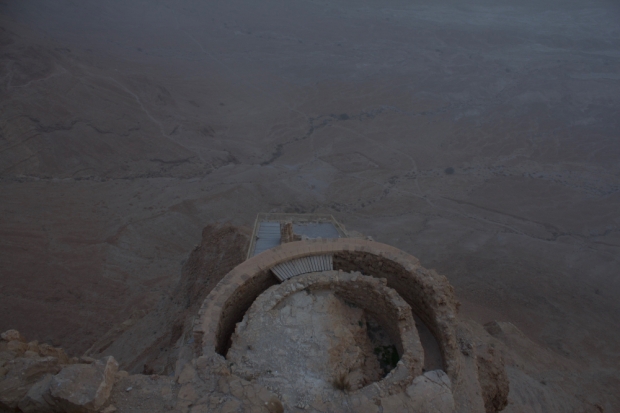
Double walled chamber. This is the second tier on the model pictured above. Wall and square siegeworks built by Roman camps can be seen down below.

Original tiles of Herod’s palace. Photo by Jordan Duerrstein.

Andrew marvels at the alien landscape. You can smell the salt of the Dead Sea in the distance.

Our group at the top, sitting inside a 1st century synagogue built by the Sicarii.
He said to them, “Because of your little faith. For truly, I say to you, if you have faith like a grain of mustard seed, you will say to this mountain, ‘Move from here to there,’ and it will move, and nothing will be impossible for you.” (Matthew 17:20)


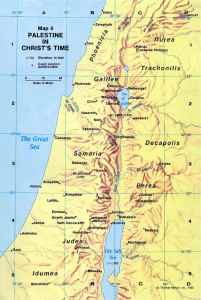
Reblogged this on walkingandwandering and commented:
This seems a very appropriate blog to re-post – Walking and wandering in the desert, in life